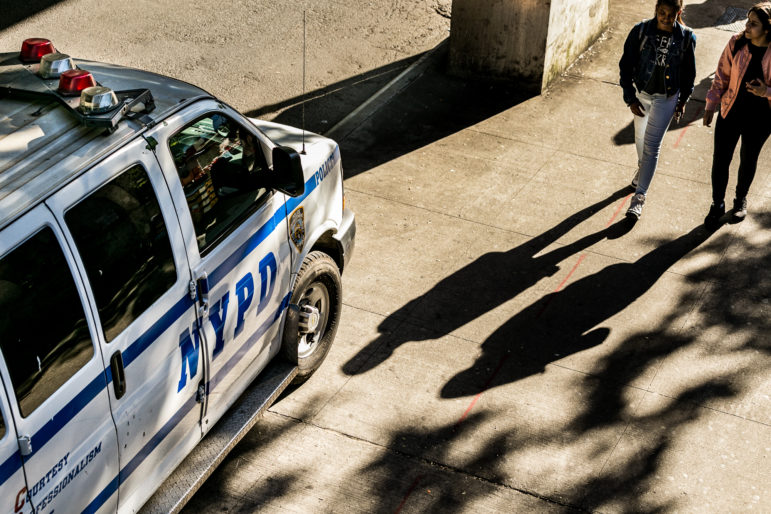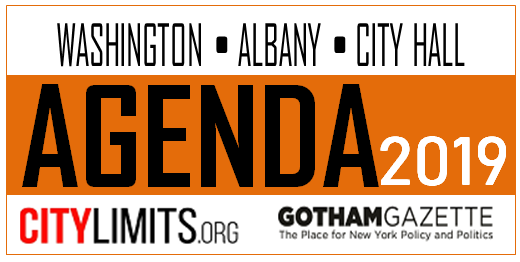
Since PROP’s founding in 2011, in the course of our multi-faceted efforts – policy analysis & advocacy, community organizing, public forums, petition drives, court monitoring, field research, gathering stories, videos, social media activities, and targeted street actions – our thinking about the kinds of criminal-justice reforms worth promoting has evolved.
We used to view incremental changes positively, but what our eyes have told us over the years, and what our knowledge of relevant research has taught us, is that such tweaks or modifications of practice don’t lead to substantive changes on the ground. Diversity, implicit bias training, body cameras, community policing and City Council legislation don’t change the harsh and central truth re NYPD practices. Carried out under a law-enforcement approach dubbed “broken windows” policing, they target poor New Yorkers of color for minor infractions that are virtually ignored in white communities.
We at PROP have become convinced that the NYPD’s unjust policies not only violate our country’s central founding principle of providing equal justice and opportunity for all its people, but also that the Department’s racist practices are so entrenched, and so long-standing, that only fundamental and far-reaching changes can really end abusive and discriminatory policing in our great city. Here are some relevant facts and PROP findings:
- Earlier this year Mayor de Blasio promised that the NYPD would take steps to eliminate racial disparities in marijuana possession arrests, yet for the first nine months of this year, 93 percent of such arrests involved New Yorkers of color.
- 94.9 percent of the NYPD’s juvenile arrests in 2015 involved Black or Latino young people.
- 95-98 percent of the New Yorkers locked up on Rikers Island are Black or Latino, so confined for two basic reasons: they are too poor to afford bail and the NYPD arrested them.
- Government data show year after year that 87 percent of NYPD misdemeanor arrests involve New Yorkers of color. Similarly, year after year, 51 percent of NYPD felony arrests involve Black New Yorkers, though they make up only 25 percent of the city’s population.
- Over the past four and a half years, PROP’s Court Monitoring Project, where volunteers sit in the criminal court arraignment parts of the city’s four major boroughs to observe and record who city officers arrest and on what charges, found that 90 percent of the observed cases, 4,645 of 5,162, involved New Yorkers of color. Virtually none of the defendants, most of whom walked out of the courtroom after their arraignment, was even charged with a predatory or dangerous offense.
These and similar undeniable facts have shown us that NYPD day-to-day practices are marked by a stark racial bias. We know, too, that political leaders, whatever their motivations, have at worst lied to the public about this ugly truth or at best have inadvertently misrepresented the harsh reality of the NYPD’s on-the-ground practices. We know that the Department’s shameful history of targeting poor and marginalized ethnic groups has stretched over 170 years back to the establishment of the agency in 1845. The city’s powers at that time expected that a main purpose of the new agency would be to control and contain two unruly groups new to New York, recent Irish immigrants and freed Black people (“free” because New York State abolished slavery in 1827).
We know, too, that Mayor Fiorello La Guardia, one of our city and country’s great progressives, in the 1930’s shelved the Harlem Riot Report, a document that he commissioned after street disturbances took place in the famed Black community. The report sharply and explicitly criticized NYPD practices aimed at Black New Yorkers, and LaGuardia deemed its contents too politically controversial to attend to or act on. Given our knowledge of the history related to this issue, our well-founded skepticism about mainstream leaders’ willingness to effectively address the problem of discriminatory and abusive policing, and our understanding of how deeply embedded the problem is in the institutional policies, culture, and history of the NYPD, we at PROP have chosen as a principal strategy for 2019 to focus our determined efforts on injecting sweeping reform proposals into the public debate.
Our recommended changes will aim to advance meaningful and substantive remedies that no mainstream politician will currently support. Not because they don’t make sense or are not the right thing to do, but because, like the report that LaGuardia ignored 80 or so years ago, they are too politically charged.
PROP’s proposed reforms for fundamental change will include:
- Abolishing “broken windows” policing.
- Eliminating the quota system for evaluating officers’ performance that emphasizes only their punitive interactions with New Yorkers and that, in effect, incentivizes bad policing.
- Dismissing Dan Pantaleo and all the officers who engaged in the reckless and irresponsible arrest of Eric Garner.
- Reducing the budget, personnel, resources, and power of the NYPD, the guiding principle being in part the time-honored shibboleth that “power corrupts and absolute power corrupts absolutely” applied to the unchecked power of the NYPD.
Specific reforms will include:
- Transferring traffic enforcement – in 2015 NYPD officers issued over 1 million traffic summonses – to another government agency. Why do we need an officer with a gun, badge, and club to pull someone over who’s driving a car with a broken tail light? Another relevant point: a number of the recent killings of Black people by officers in different parts of the country started out as traffic stops. If other government personnel made those stops, the victimized Americans would still be alive.
- Having mental-health professionals be the first responders to emergencies involving persons in psychiatric crisis. Now 911 dispatchers have two options: to send an officer or an ambulance. We propose removing the 911 unit from the NYPD and providing dispatchers with a list of mental-health and social-service organizations and community-involved clergy for every neighborhood in the city. Professionals with years of training and preparation would arrive on the scene – the decision that physical restraints are needed would rest with them. Such a considered approach would save lives rather than take them.
- Disbanding NYPD units that, while focusing on specific groups and/or activity, are notorious for abusing their power and violating the rights of New Yorkers from vulnerable constituencies. Eliminated units would include the nuisance abatement, vice, and peddlers squads.
- Establishing an independent prosecutor’s office, separate from the executive branch and the boroughs’ district attorneys, whose sole purpose would be to investigate and to prosecute, when called for, all alleged acts of police brutality and excessive use of force, even in cases when the victim was armed or did not die.
America teaches her young people that she provides equal justice and opportunity for all people, not equal justice and opportunity for all except if you’re people of color, except if you’re poor. America teaches that under her legal system, you’re innocent until proven guilty, not that you’re innocent until proven guilty except if you’re poor, except if you’re an American of color. America teaches that her government is of, by, and for the people, not of, by, and for the people, except if you’re a non-white person, except if you’re a low-income person.
Our goal for 2019 is grandiose and, admittedly, quixotic: to, starting with New York City, call America home, to create an America, starting with the Big Apple, that adheres to the founding principles of which she is so justifiably proud. And it’s only by agreeing to and instituting fundamental and far-reaching changes, starting with her policing and criminal justice systems, that America can fulfill its stated vision of a just, livable, and inclusive society for all its people.
Bob Gangi has been an activist, community organizer and public policy advocate in New York City for over 40 years. Before he founded the Police Reform Organizing Project in April 2011, he served as Executive Director of the Correctional Association for over 29 years. He was a Democratic candidate for mayor in 2017.








